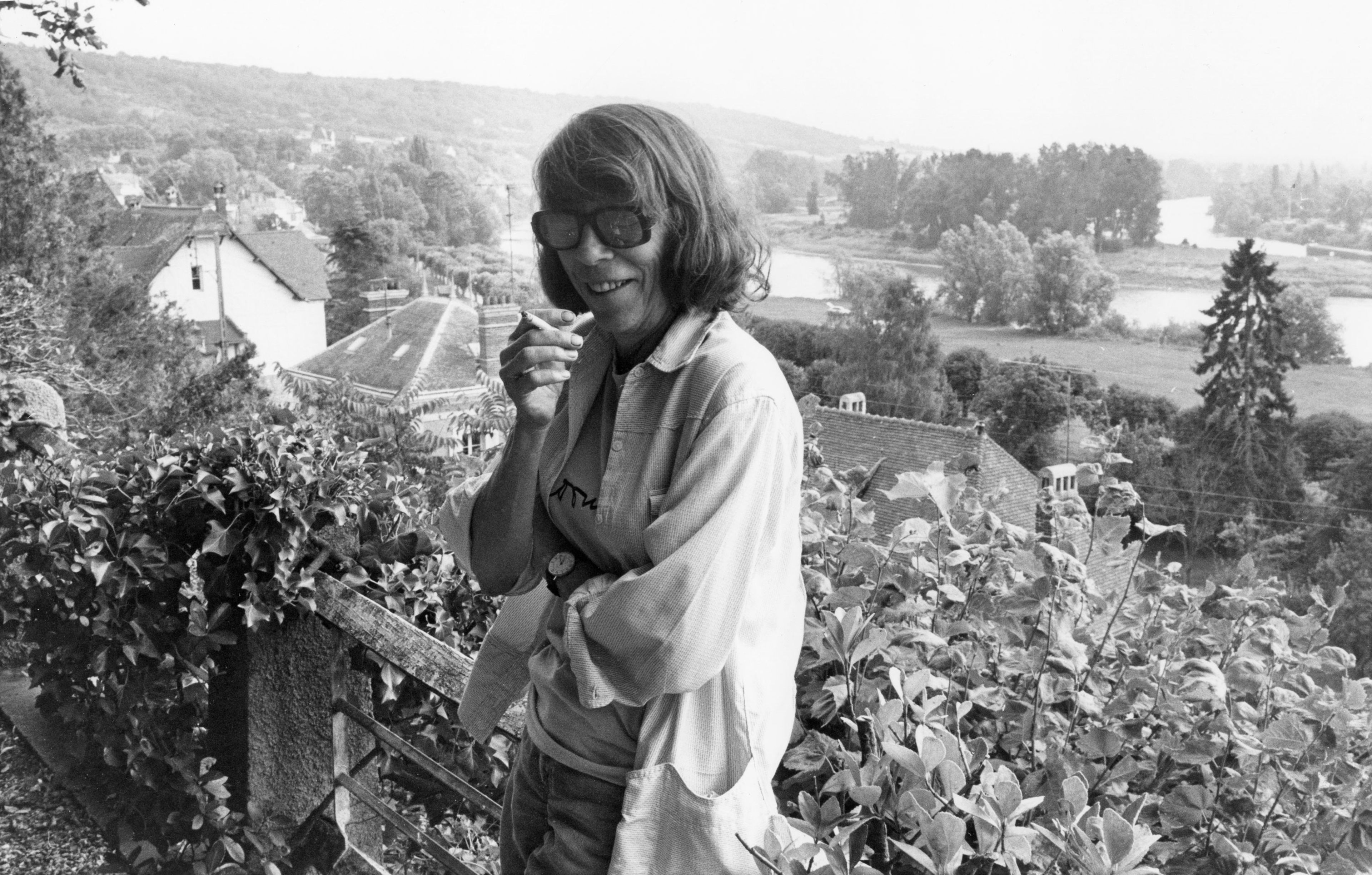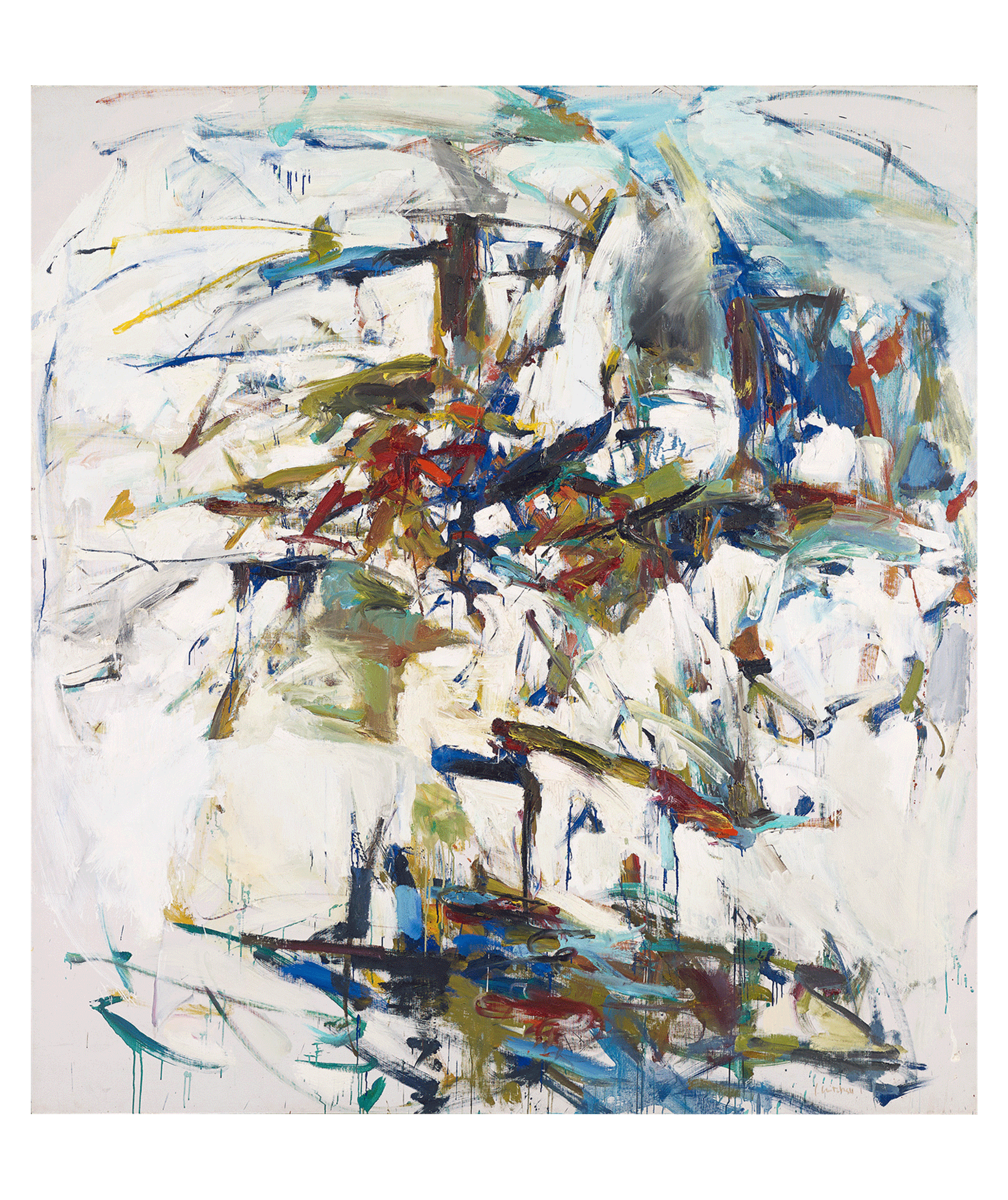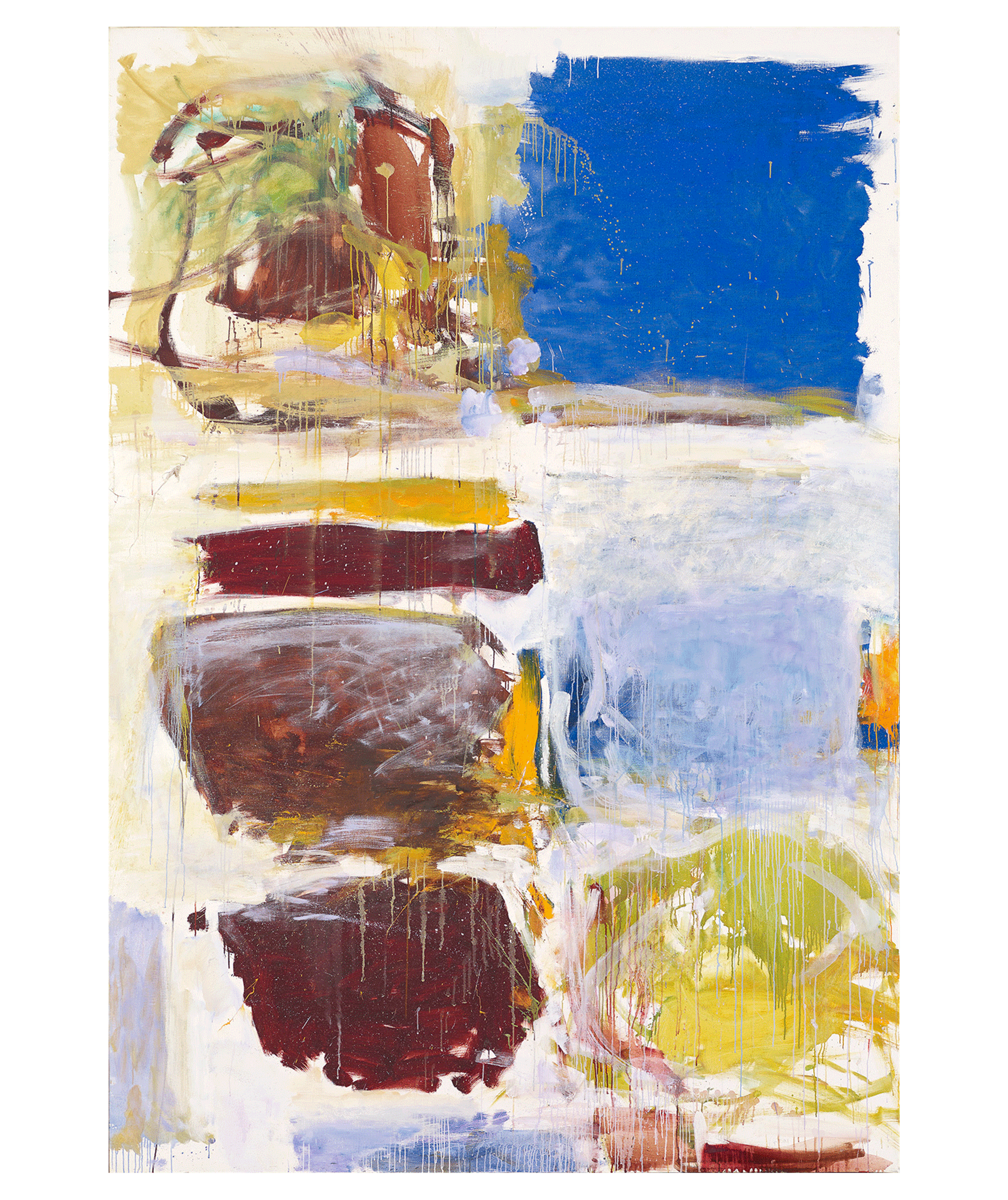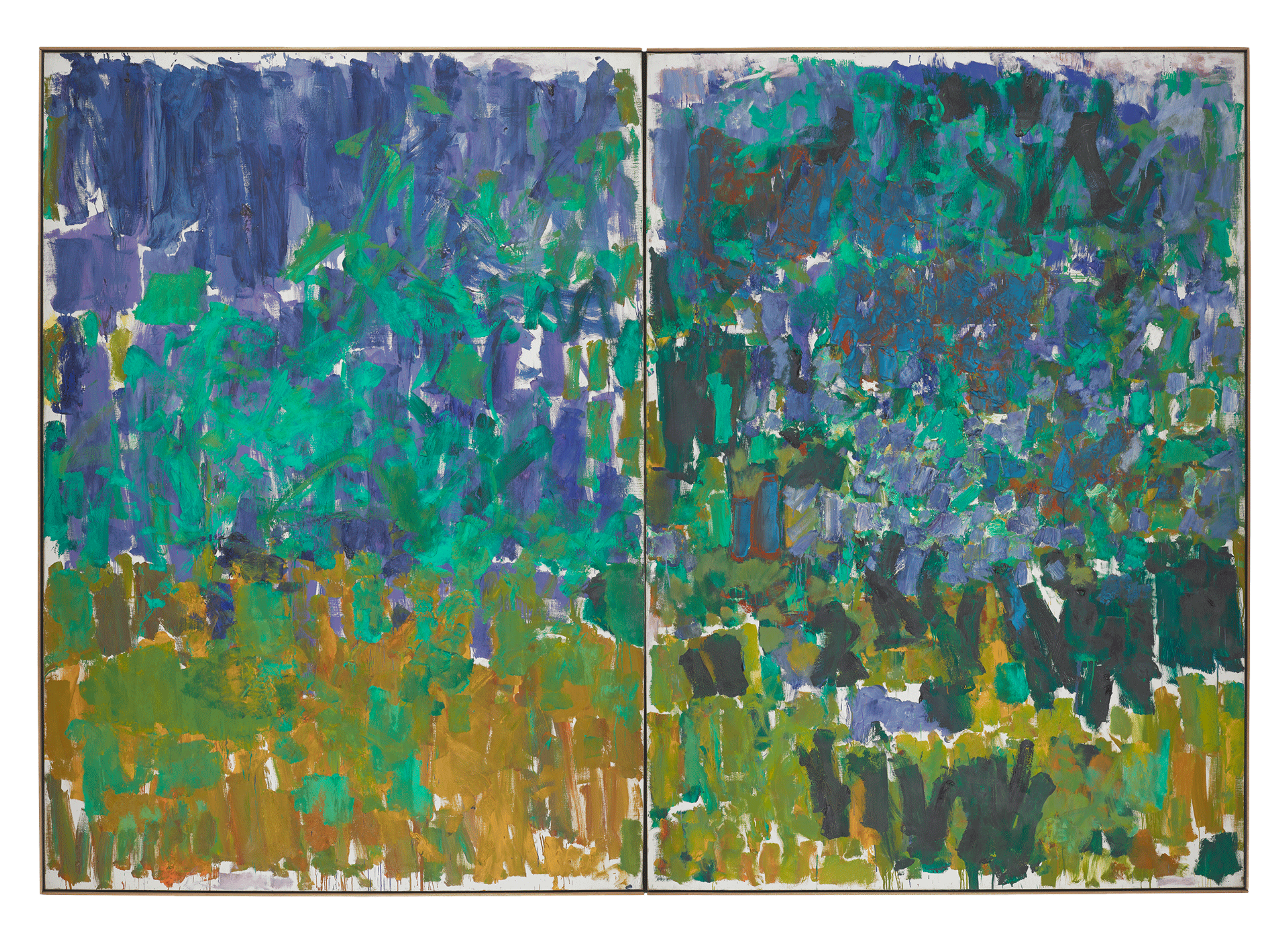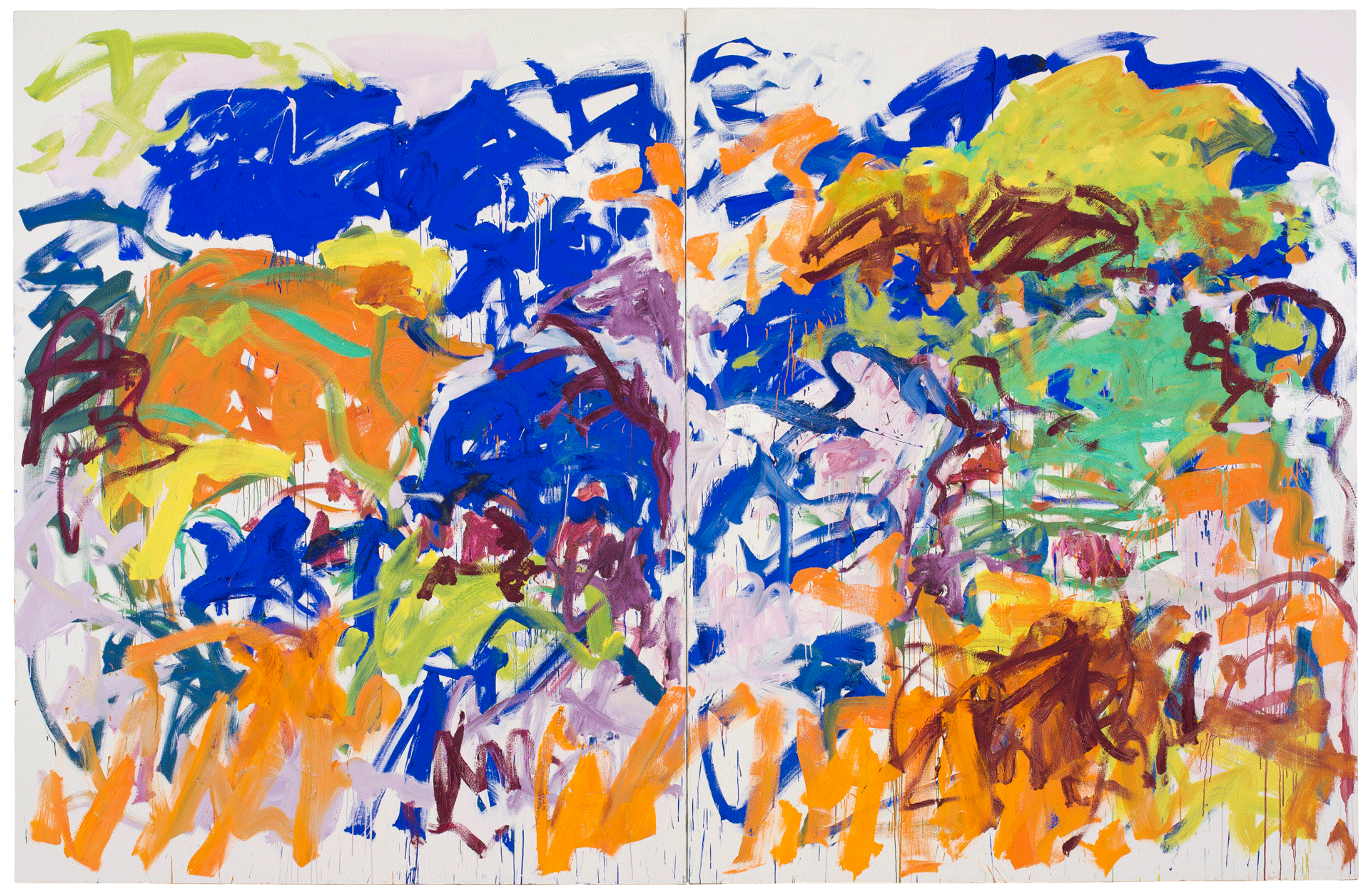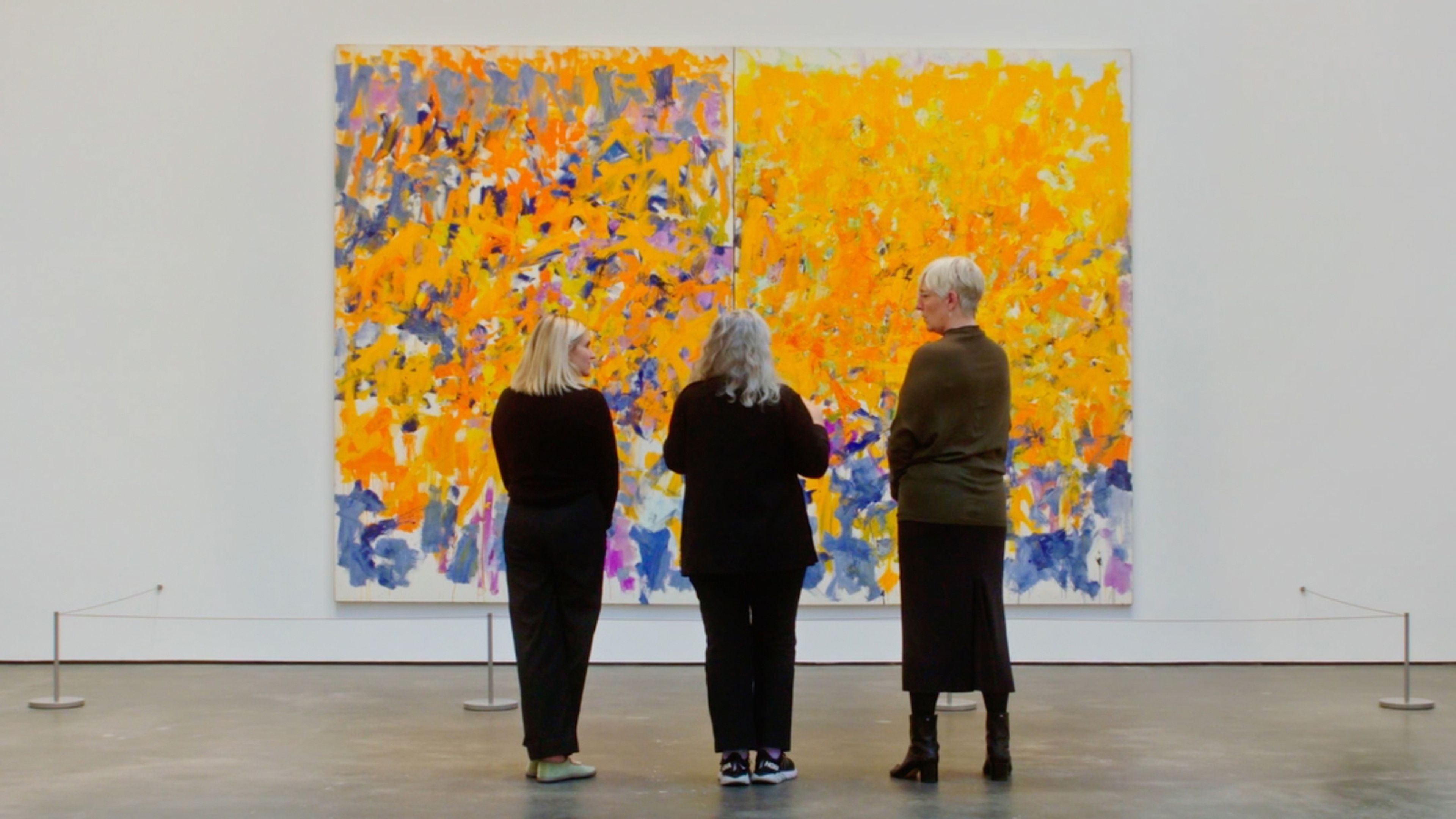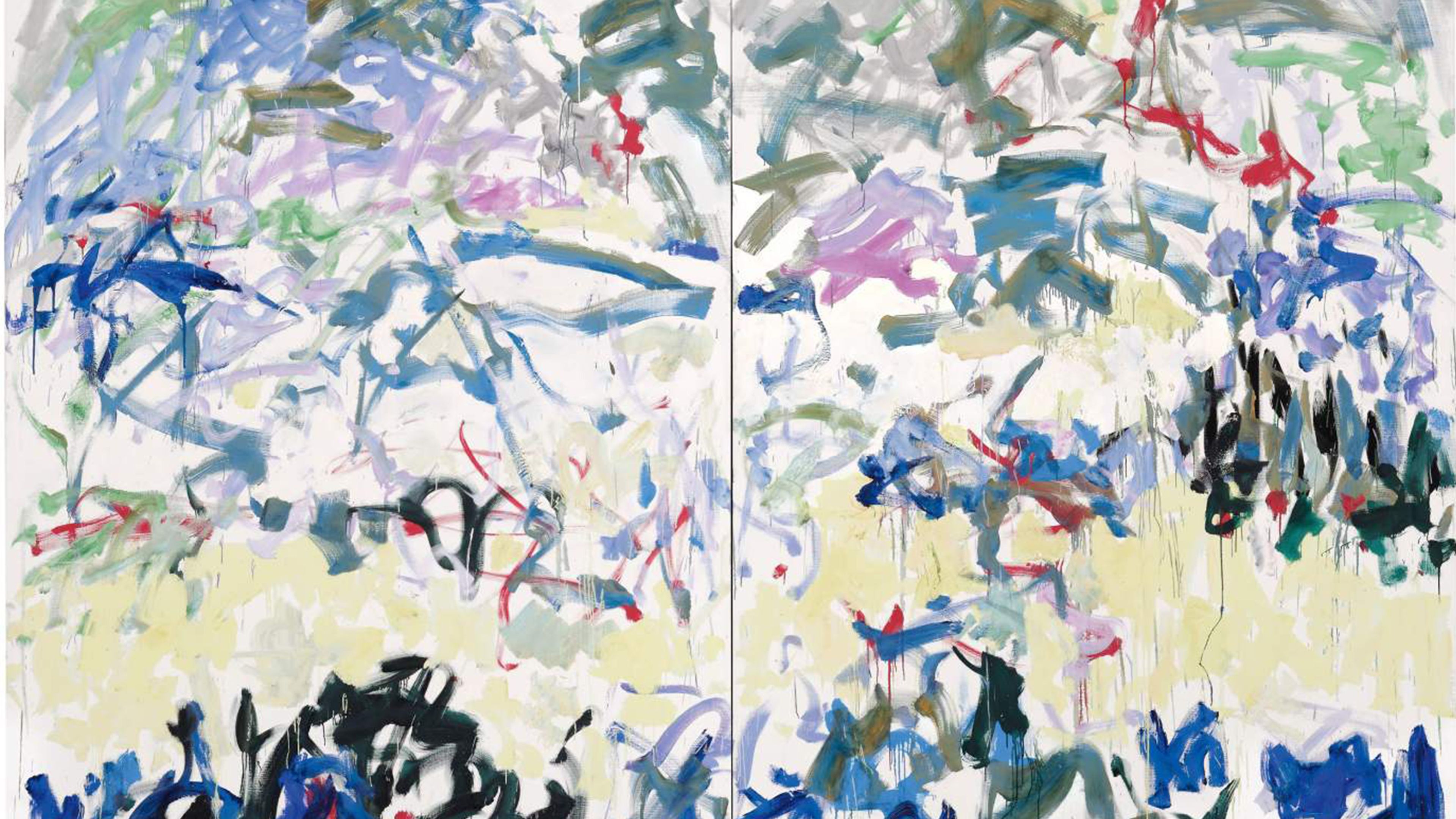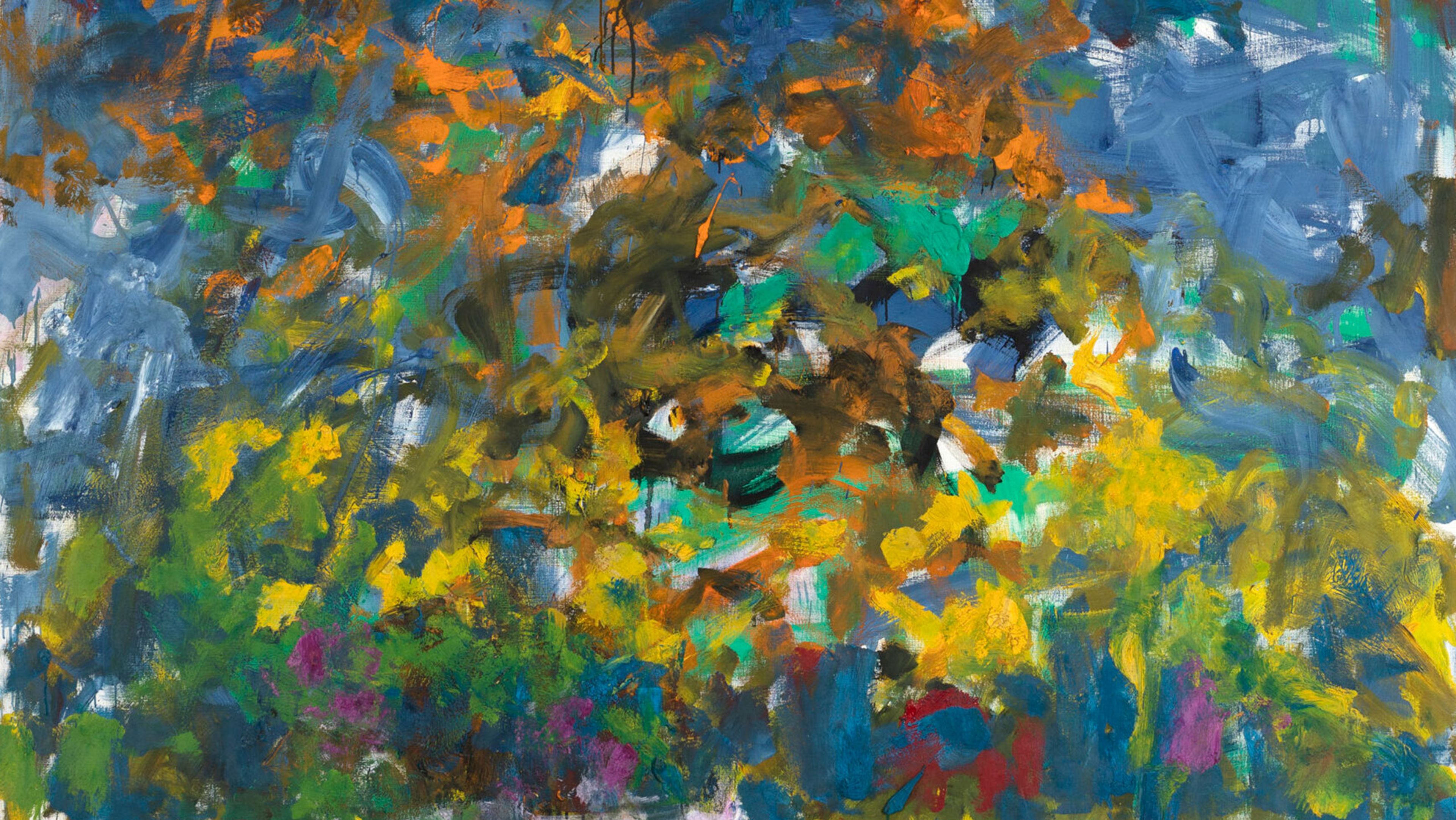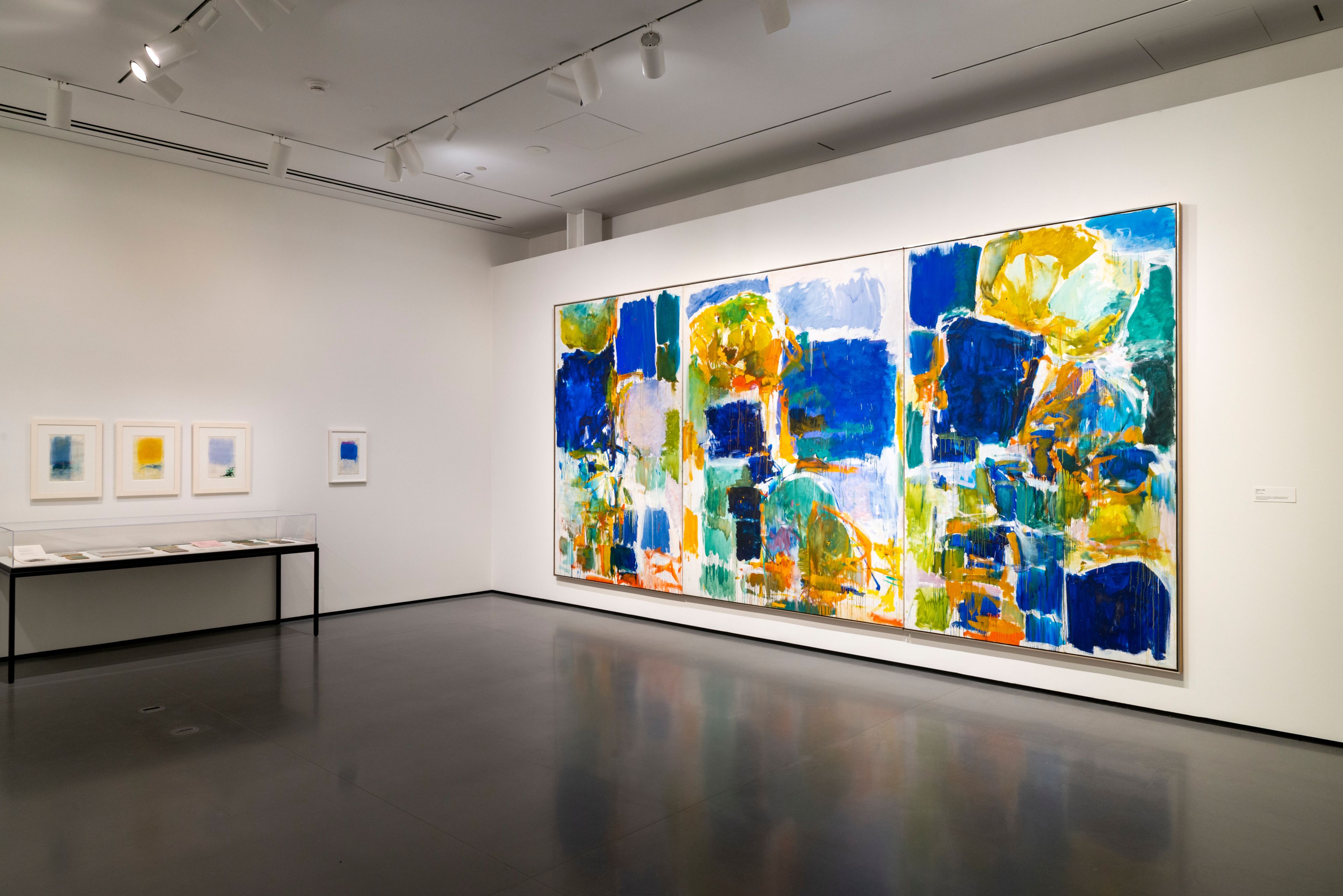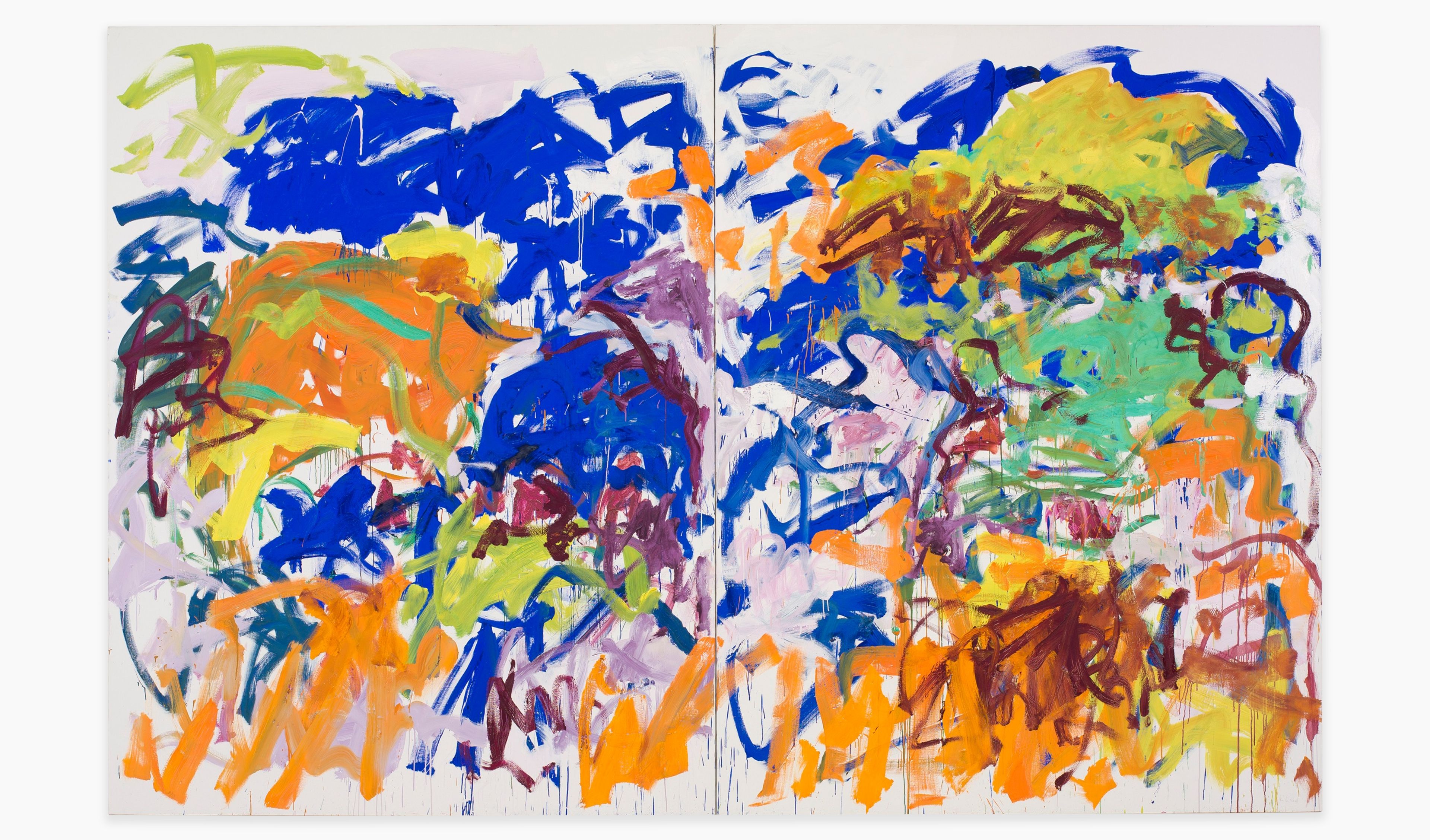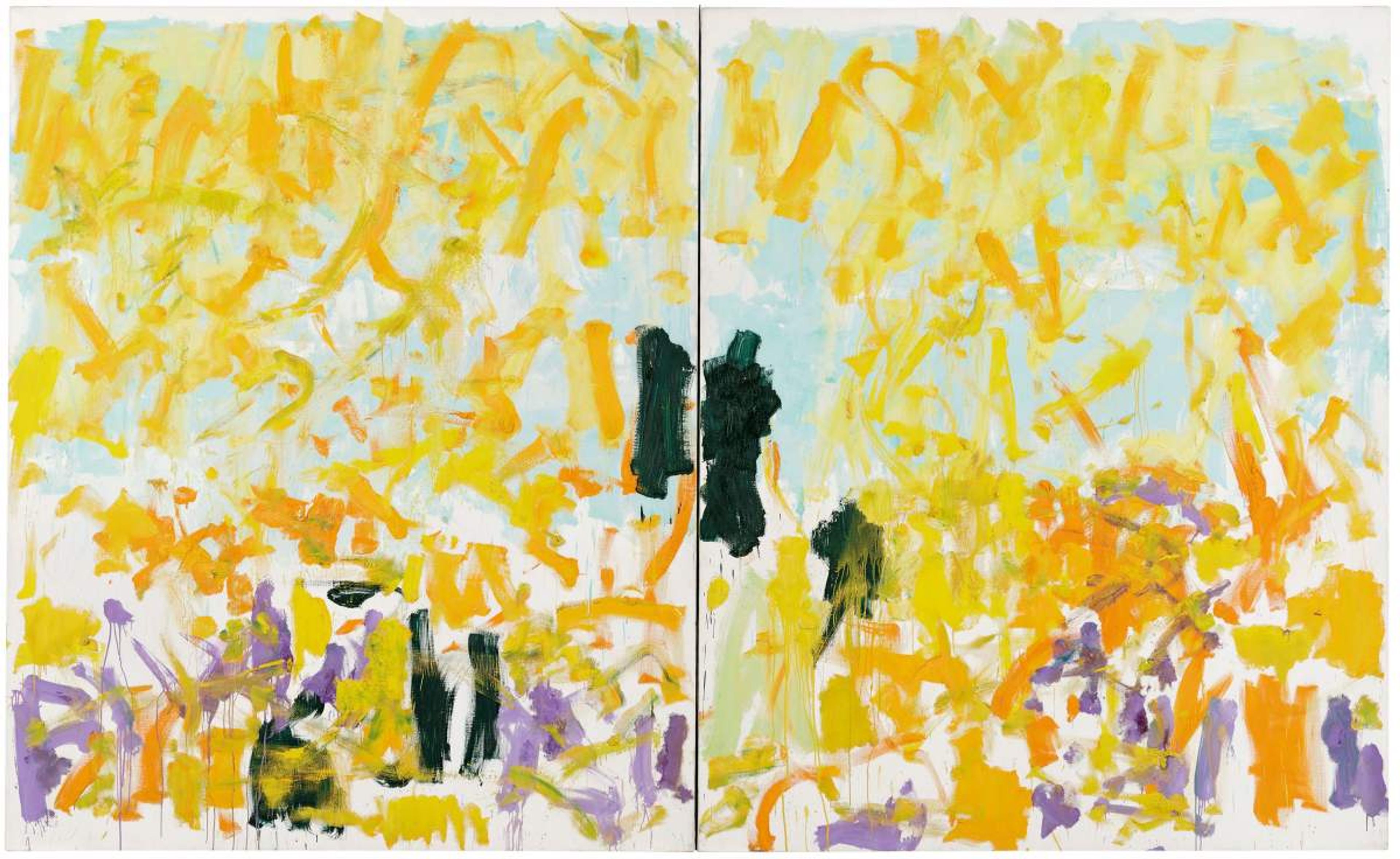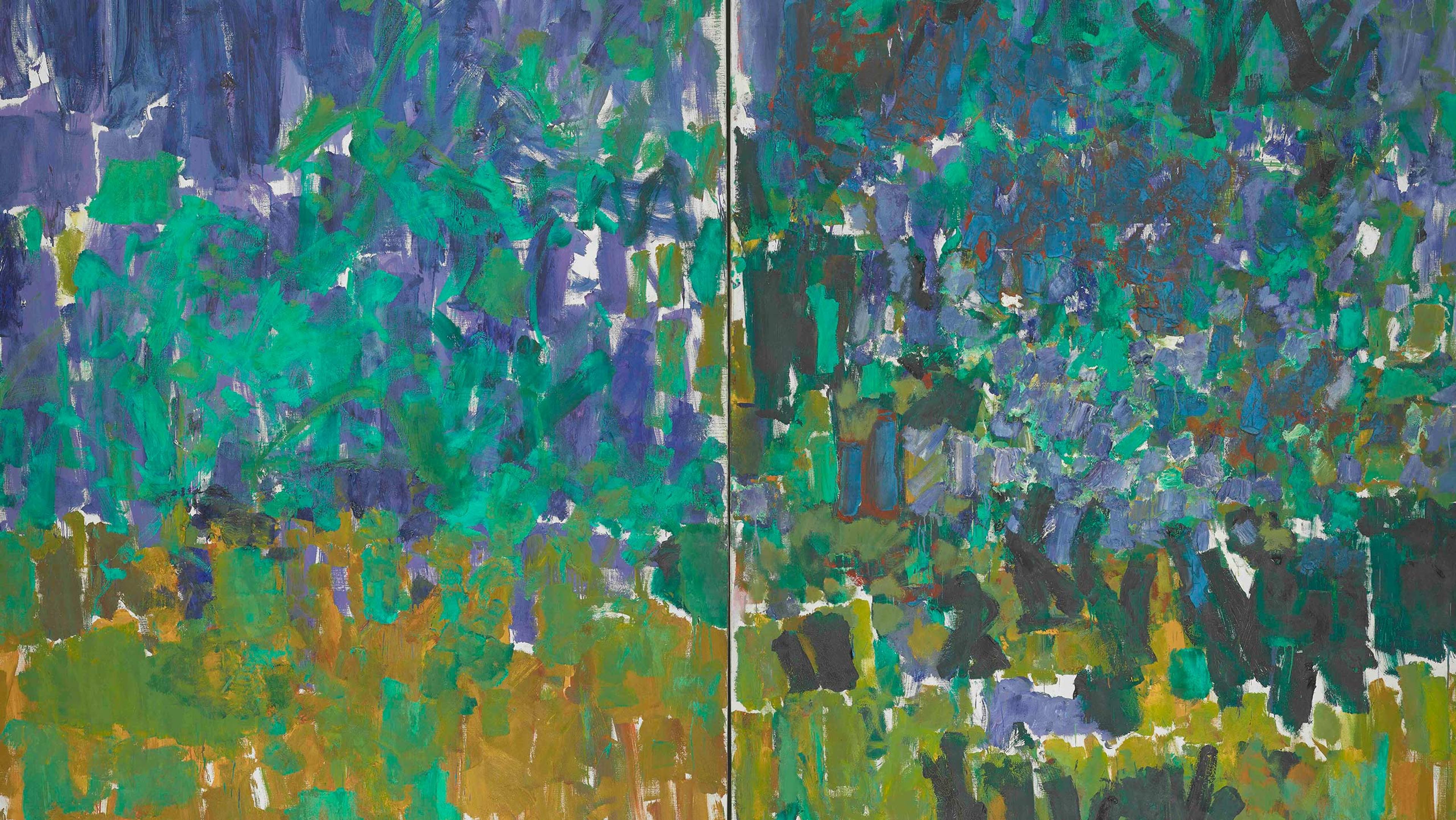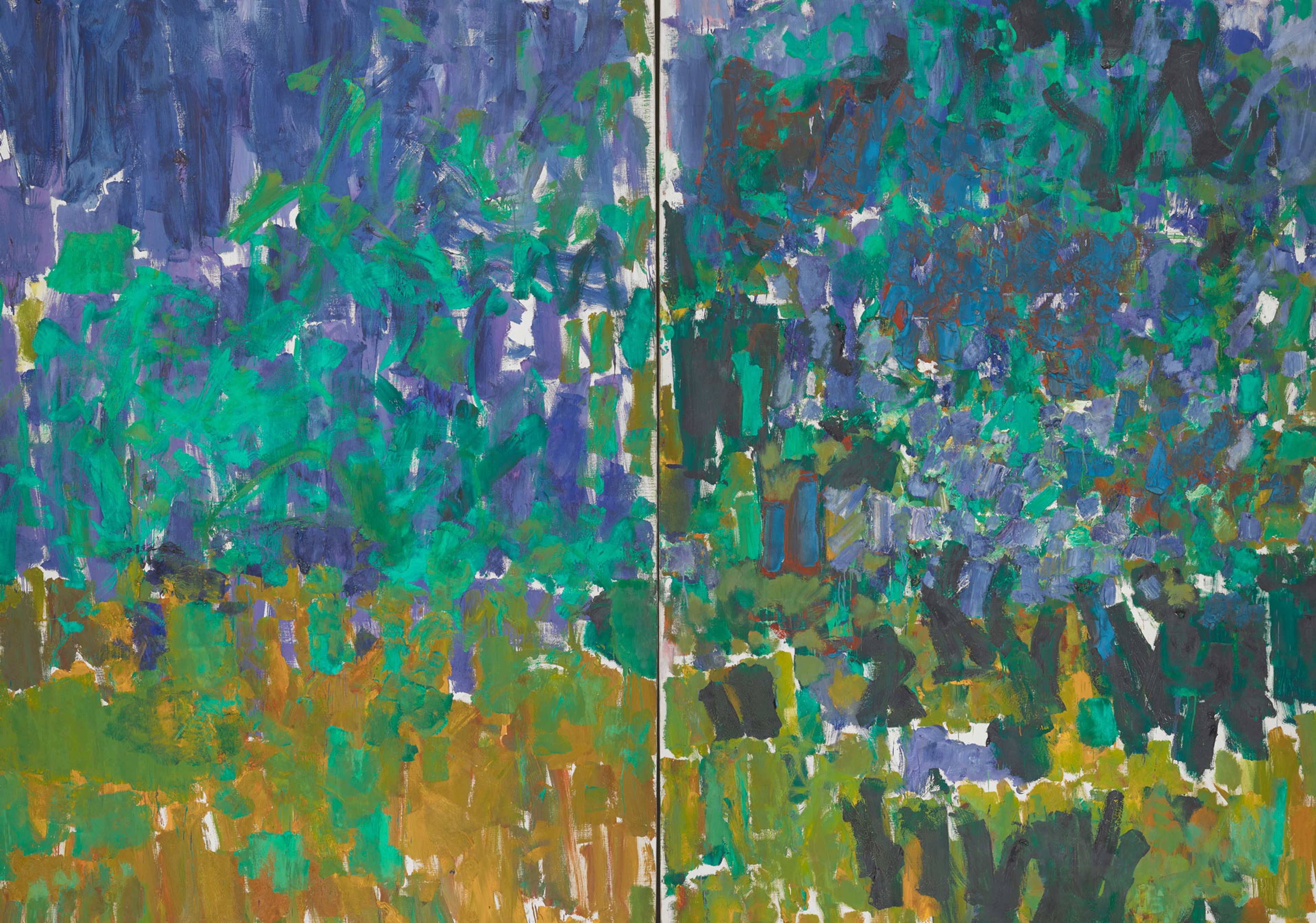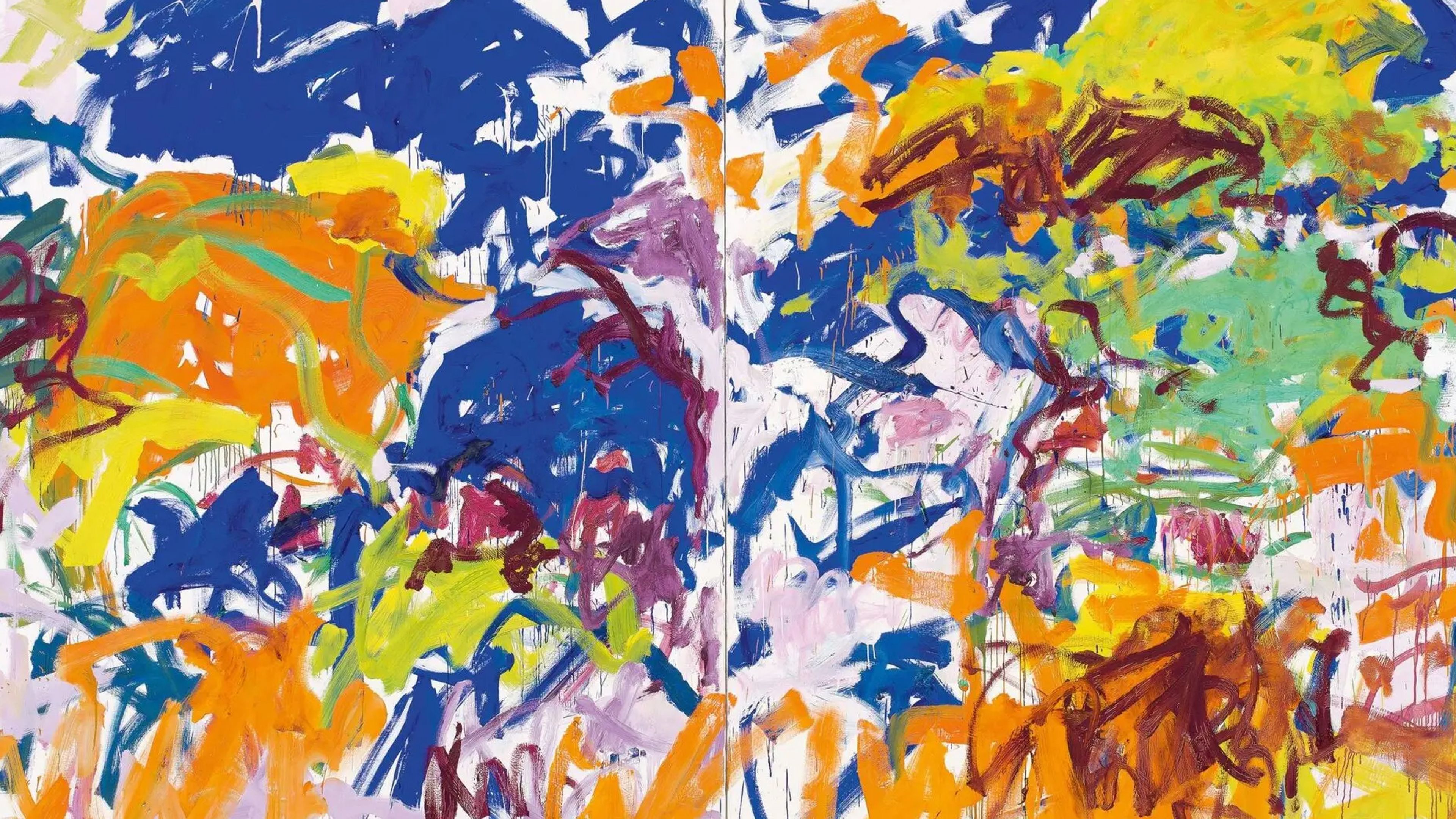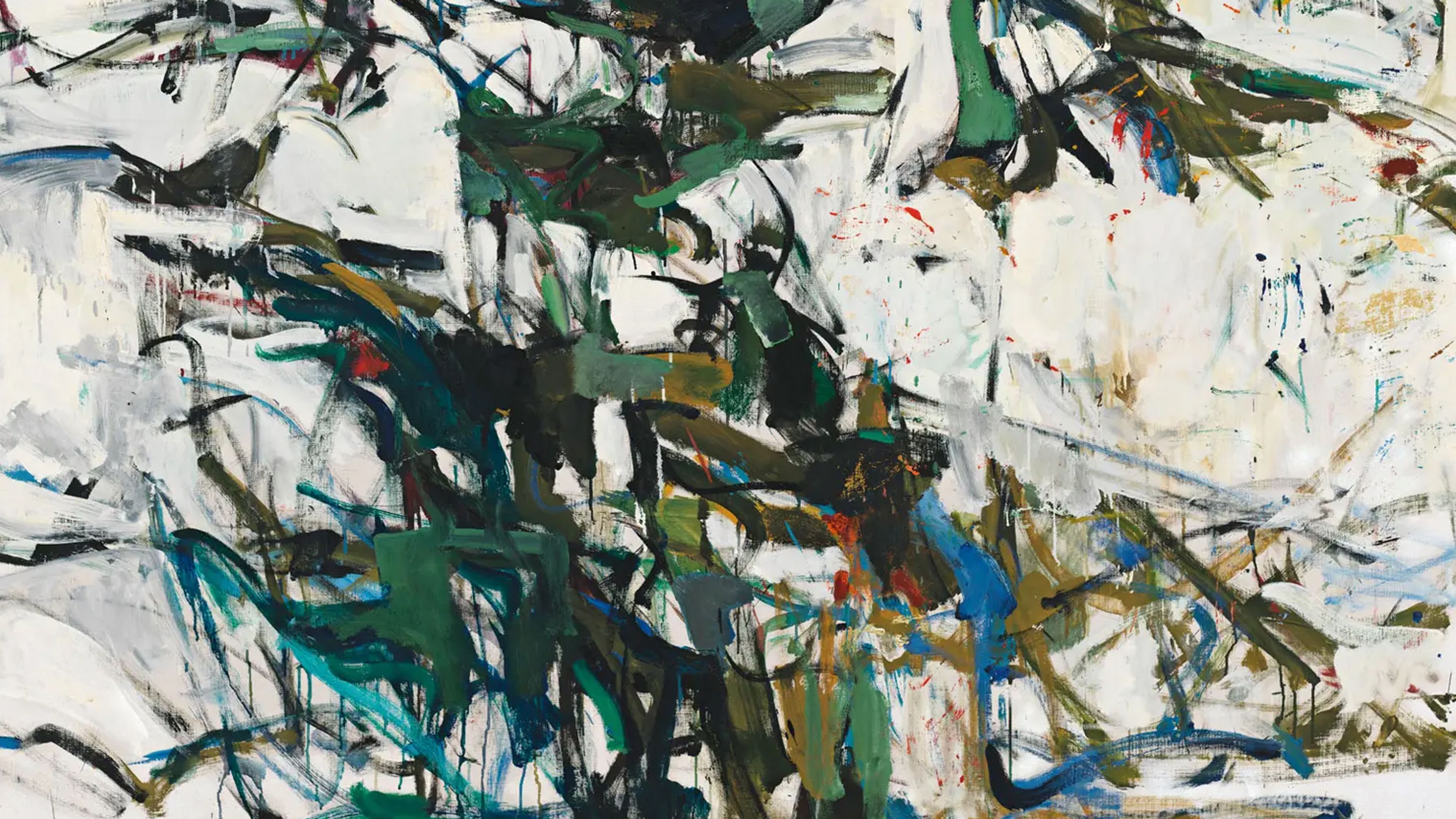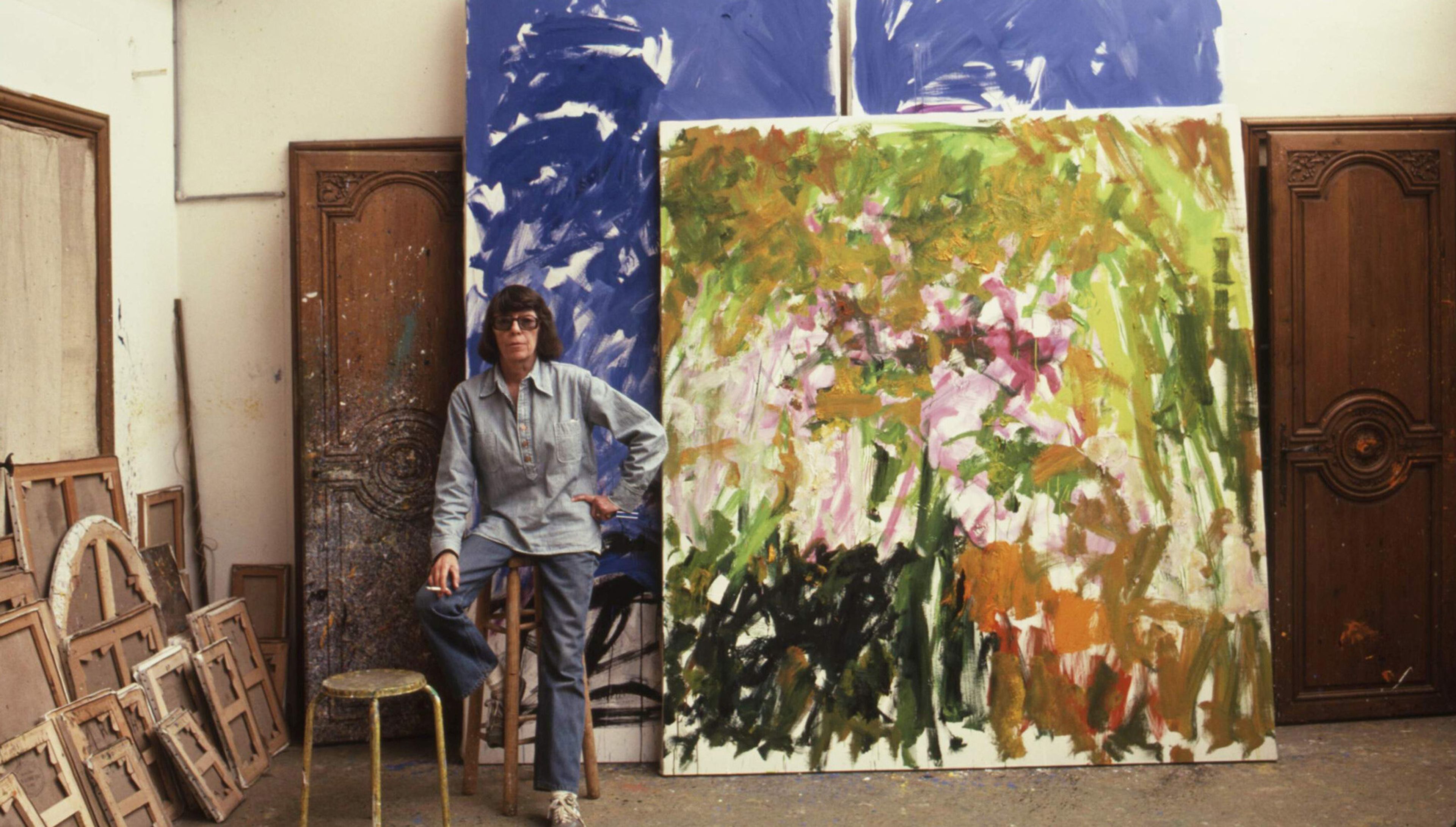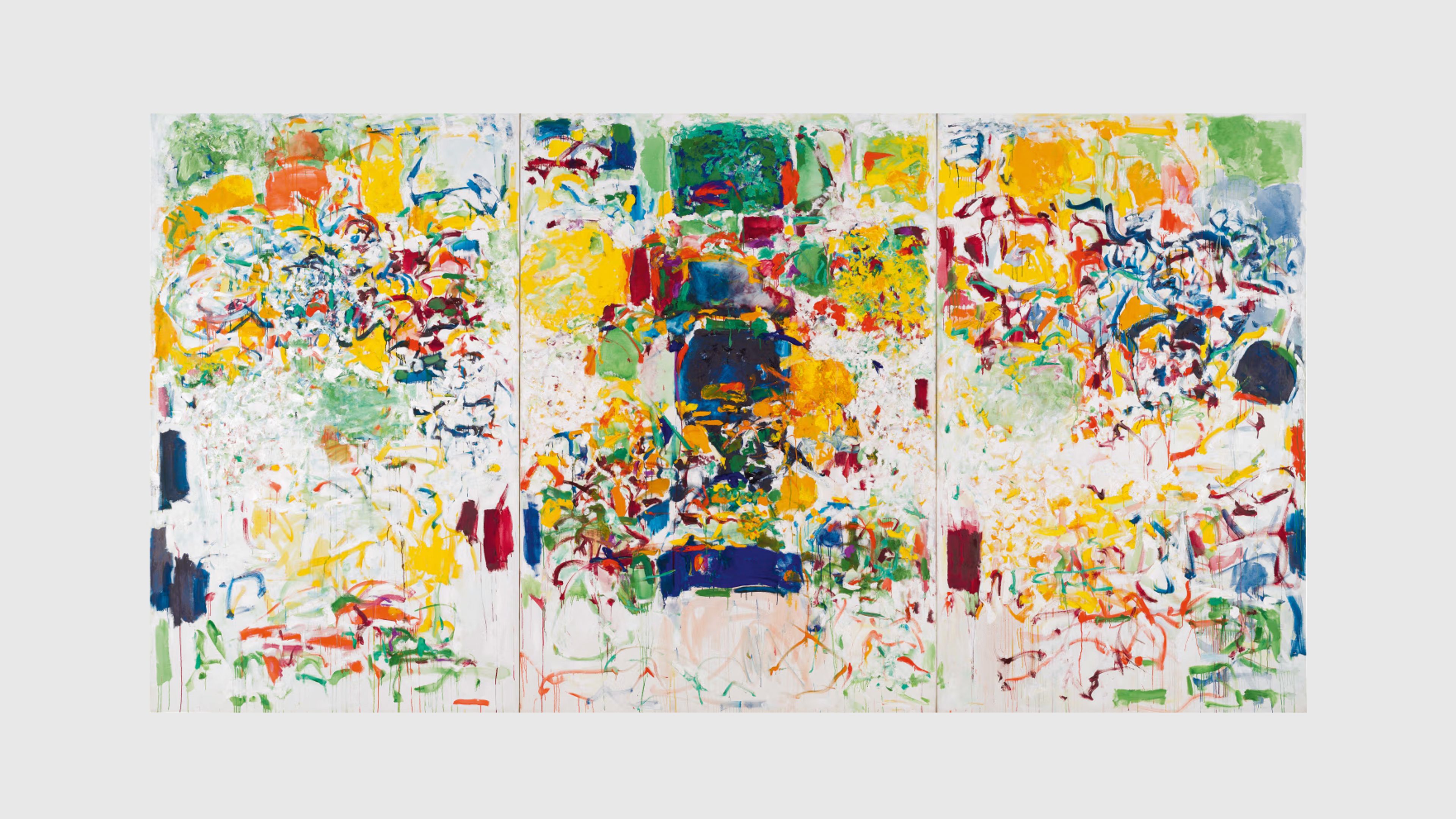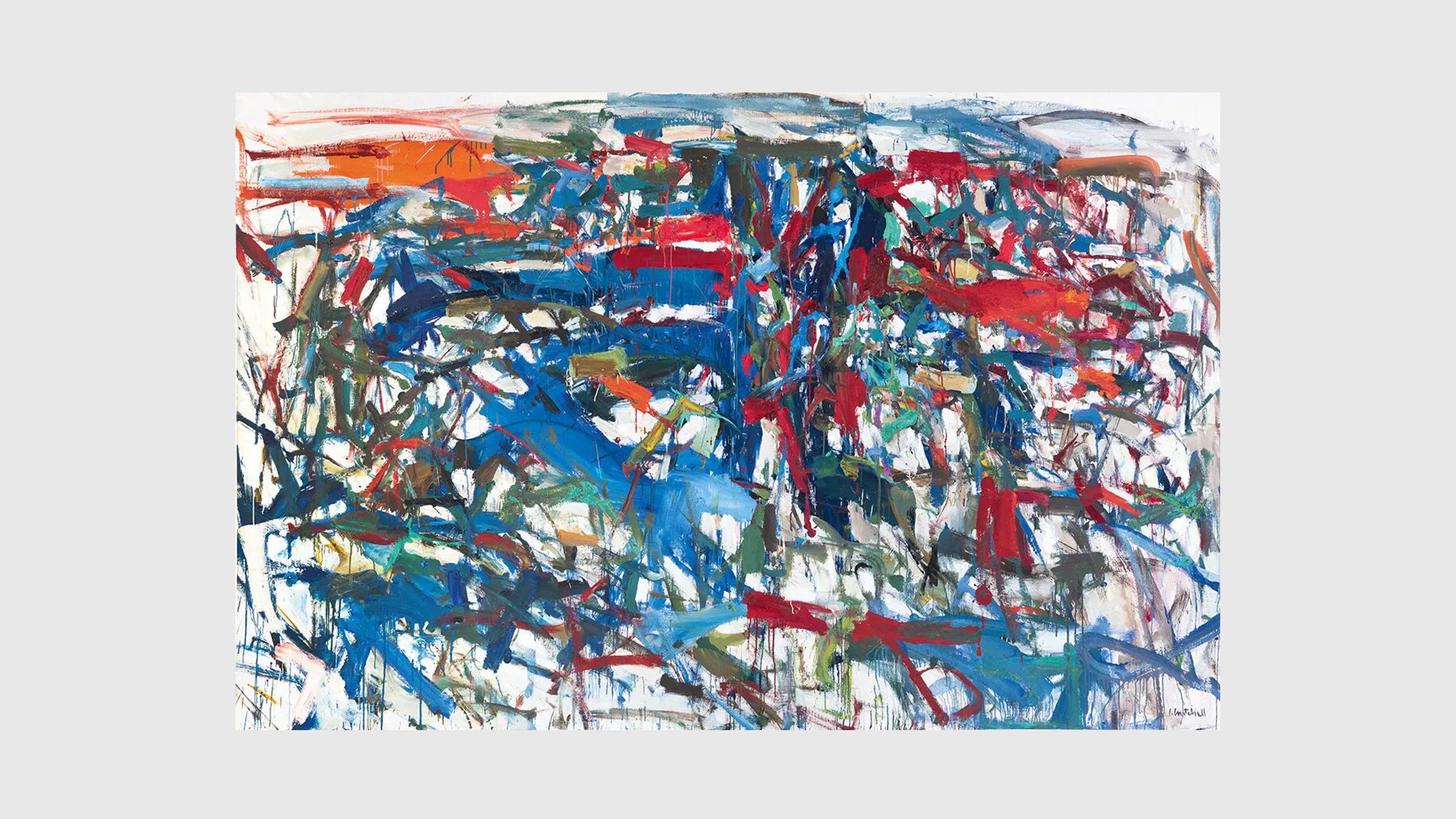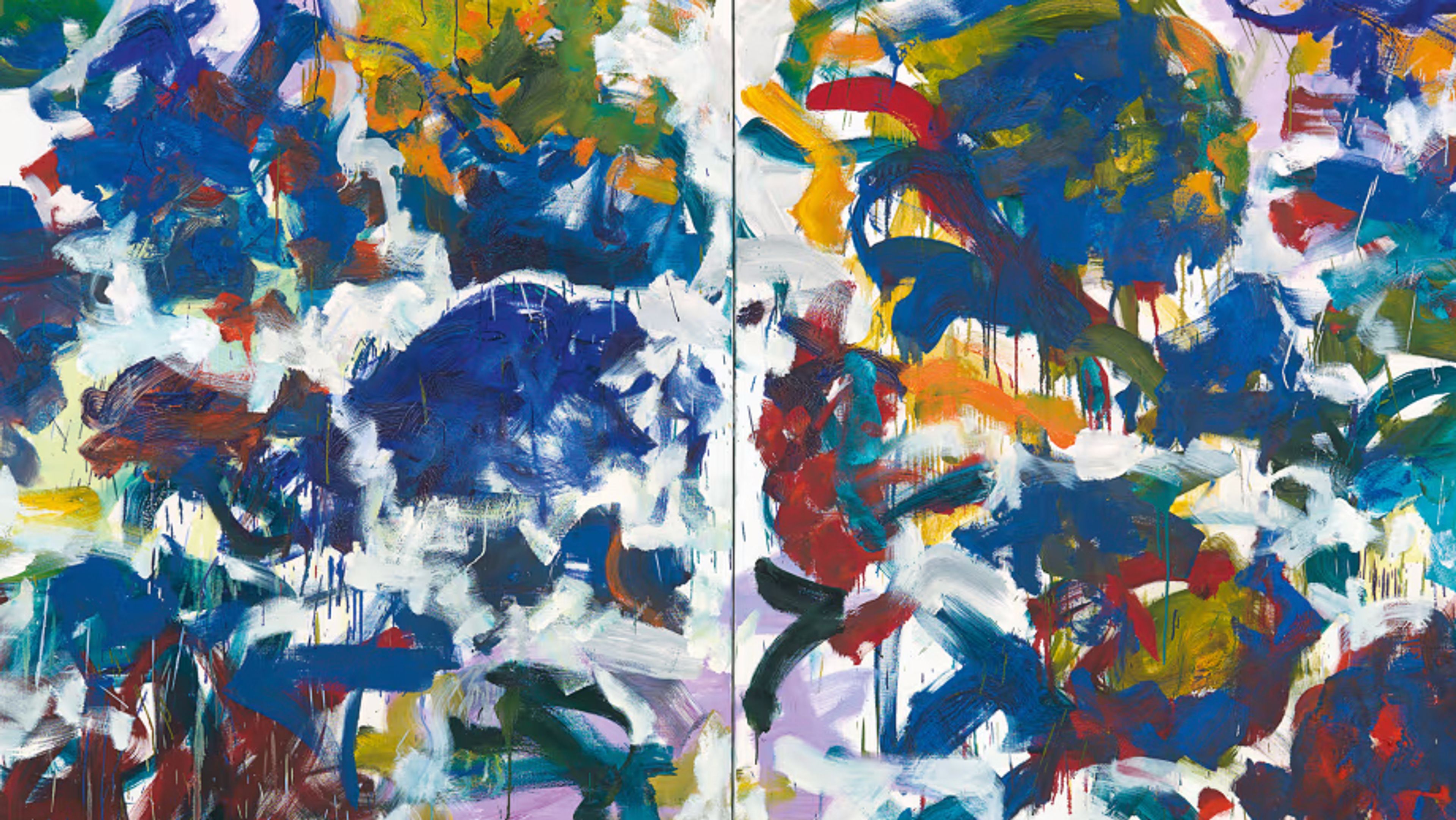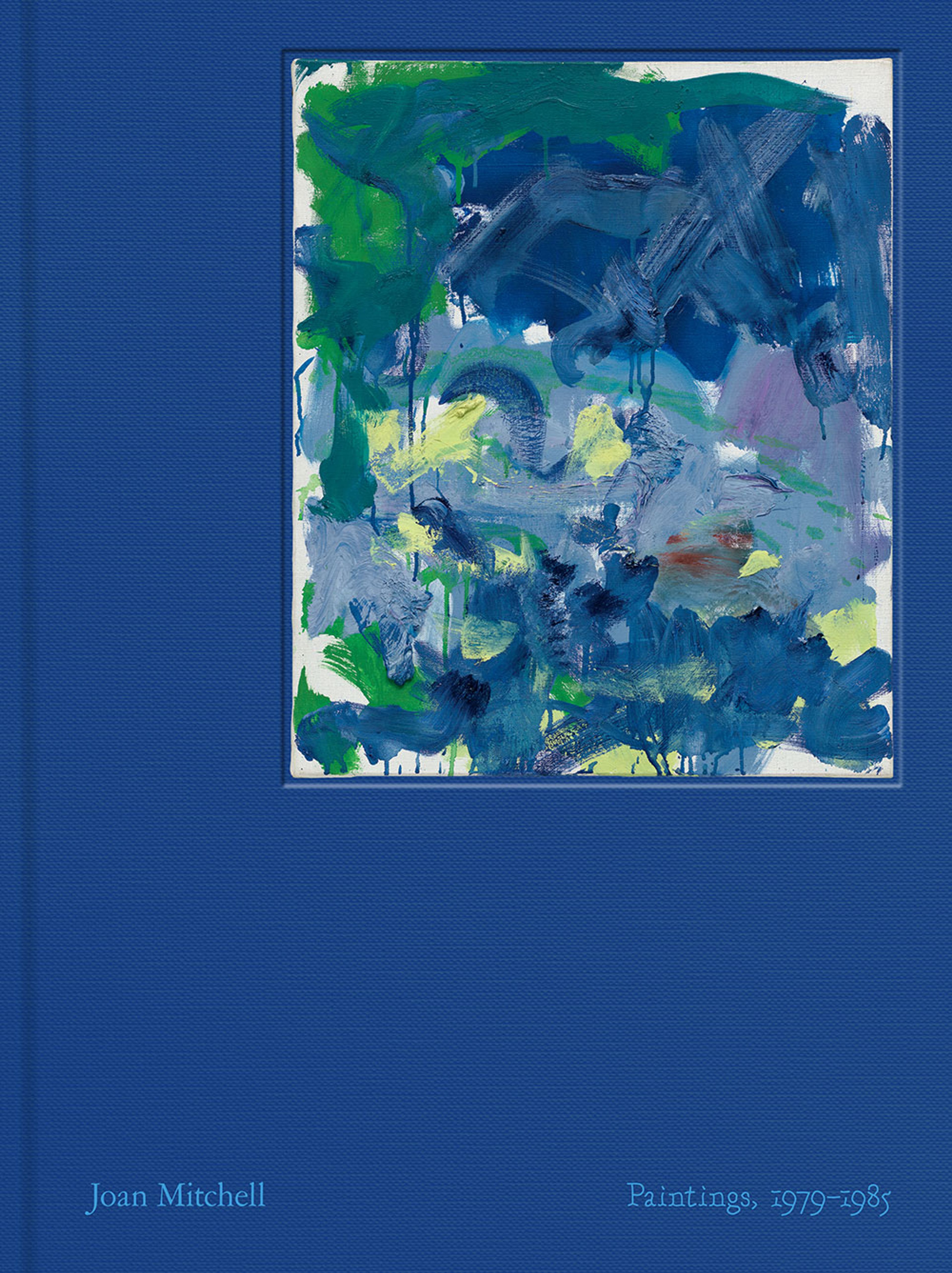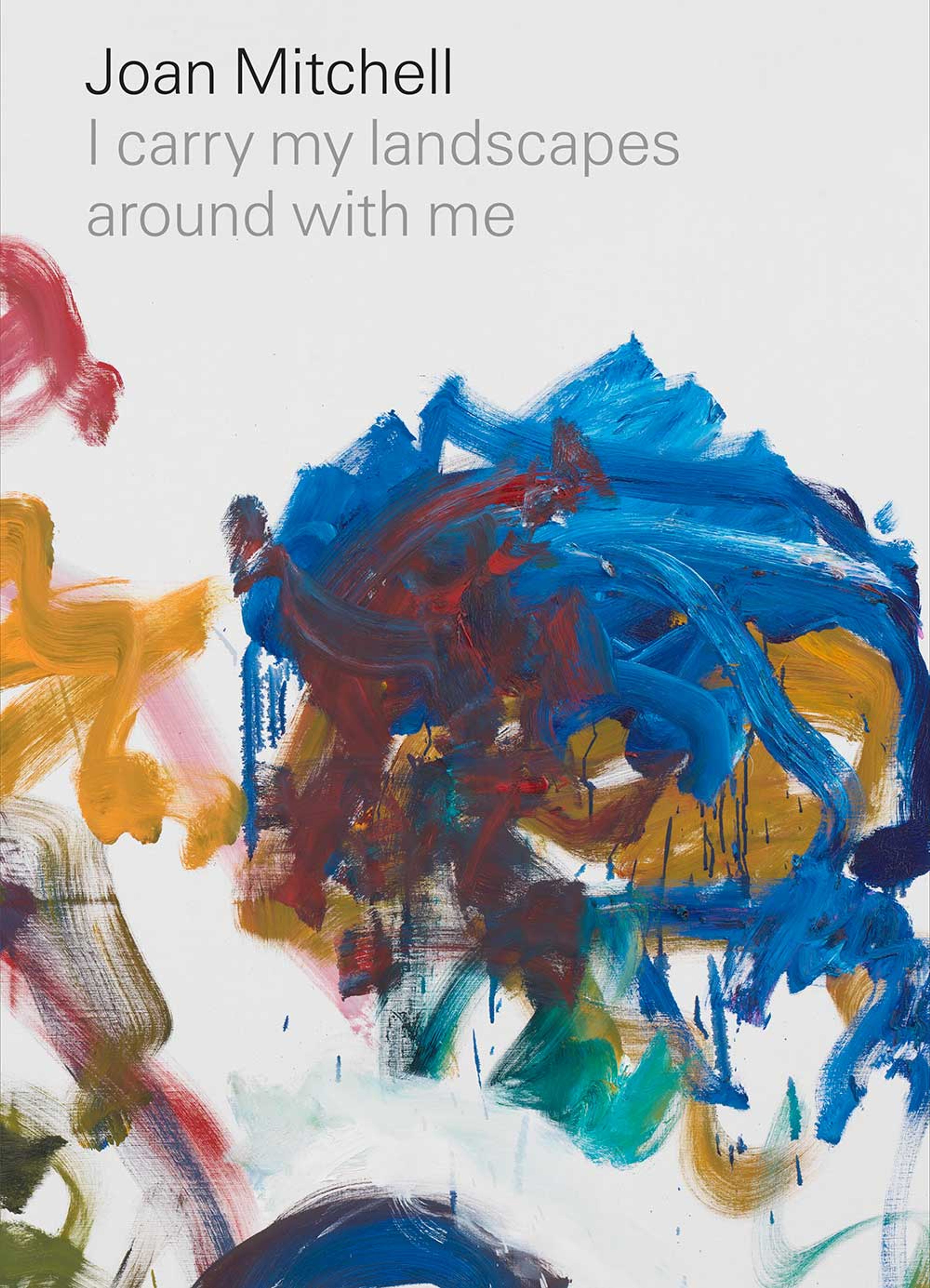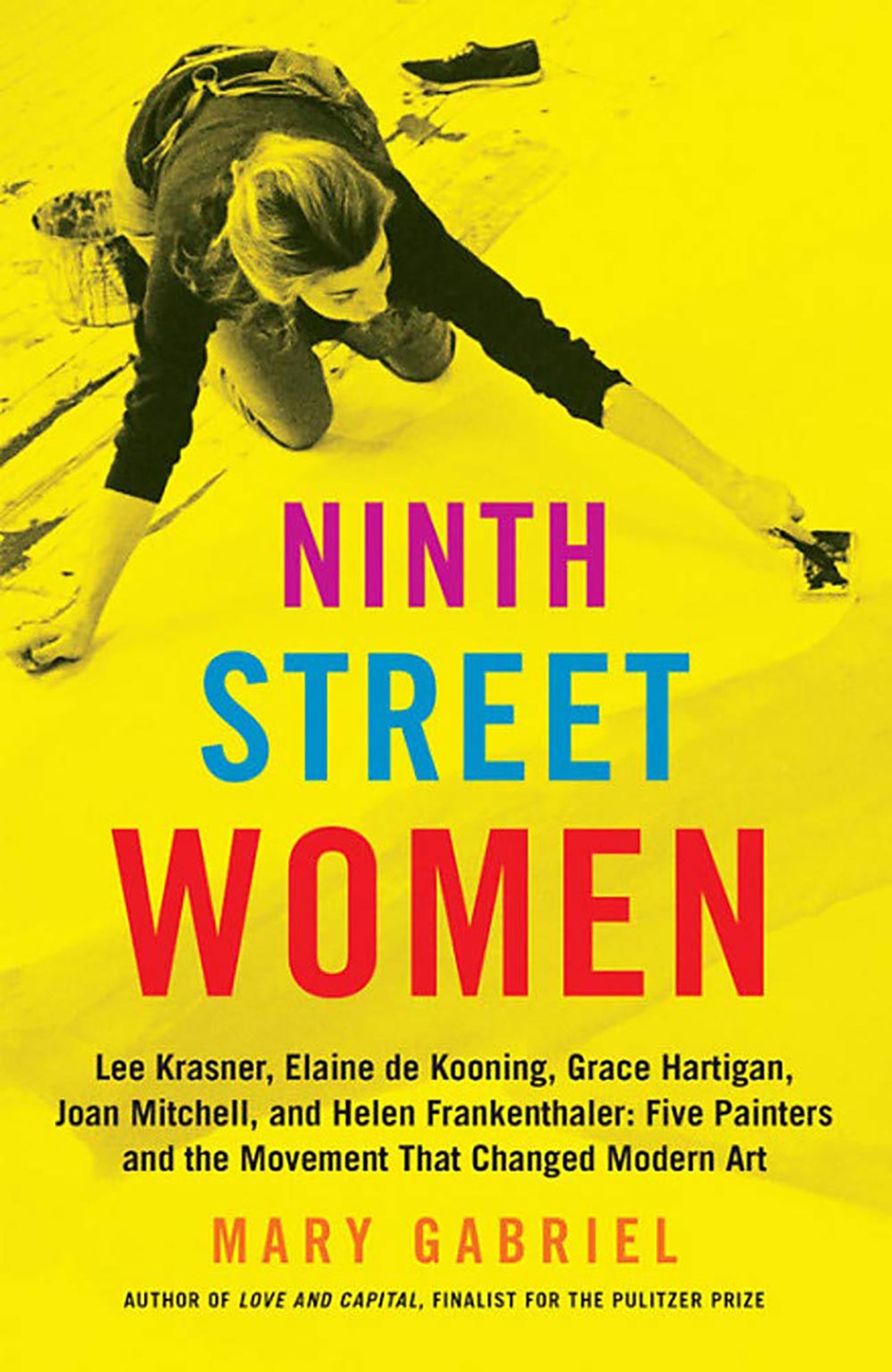Joan Mitchell
Joan Mitchell (1925–1992) established a singular visual vocabulary over the course of her more than four-decade career. While rooted in the conventions of abstraction, Mitchell’s inventive reinterpretation of the traditional figure-ground relationship and remarkable adeptness with color set her apart from her peers, resulting in intuitively constructed and emotionally charged compositions that alternately conjure individuals, observations, places, and points in time.
Learn MoreSurvey
Exhibitions
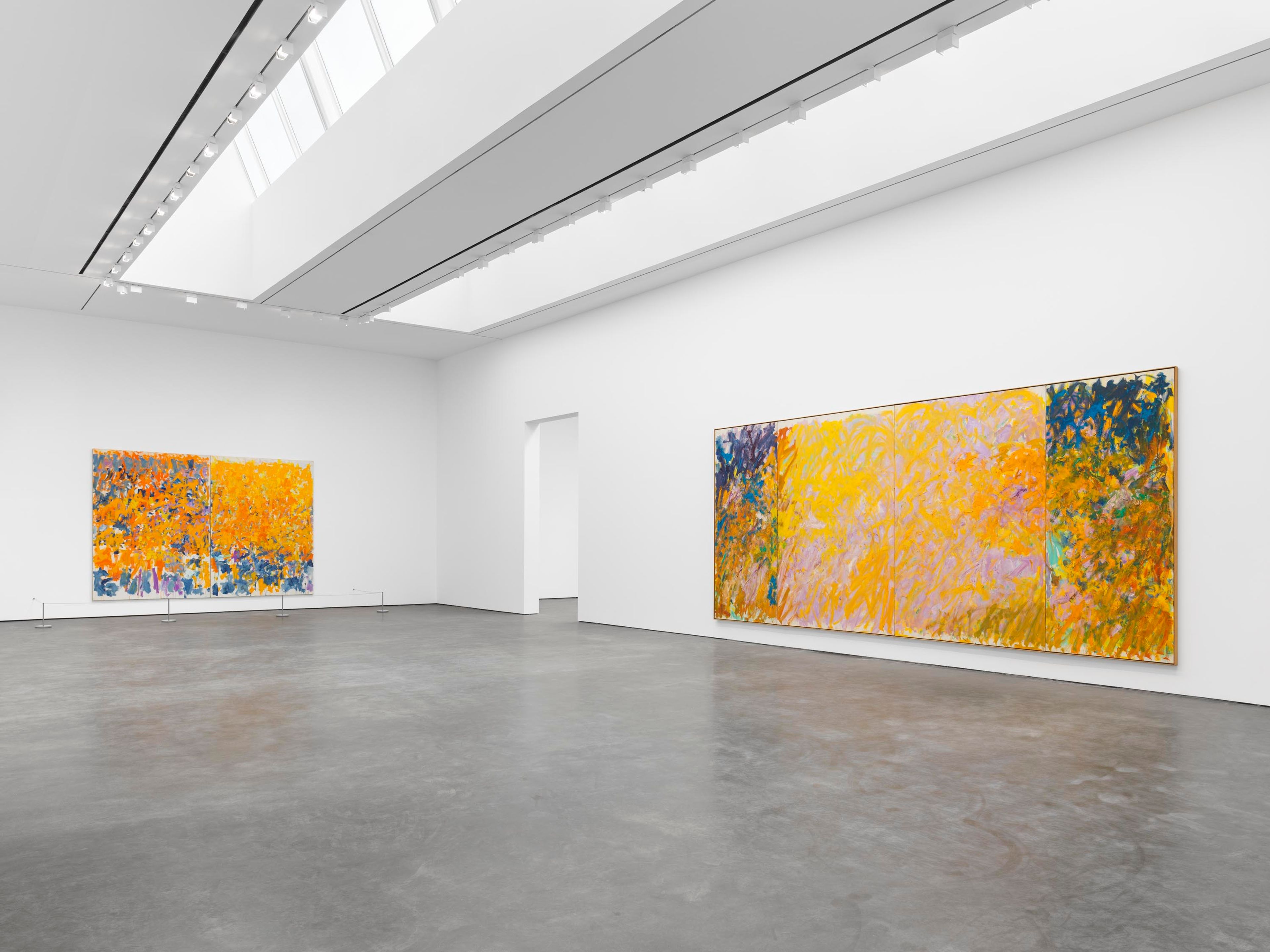
Explore Exhibitions
Artist News
Biography
Joan Mitchell (1925–1992) established a singular visual vocabulary over the course of her more than four decade career. While rooted in the conventions of abstraction, Mitchell’s inventive reinterpretation of the traditional figure-ground relationship and synesthetic use of color set her apart from her peers, resulting in intuitively constructed and emotionally charged compositions that alternately conjure individuals, observations, places, and points in time. Her prodigious oeuvre encompasses not only the large-scale abstract canvases for which she is best known, but also smaller paintings, drawings, and prints.
Born in Chicago and educated at the School of the Art Institute of Chicago, from which she received a BFA (1947) and an MFA (1950), Mitchell moved to New York in 1949 and was an active participant in the downtown arts scene. She began splitting her time between Paris and New York in 1955, before moving permanently to France in 1959. In 1968, Mitchell settled in Vétheuil, a small village northwest of Paris, while continuing to exhibit her work throughout the United States and Europe. It was in Vétheuil that she began regularly hosting artists at various stages of their careers, providing space and support to help them develop their art. When Mitchell passed away in 1992, her will specified that a portion of her estate should be used to establish a foundation to directly support visual artists.
In 1951, Mitchell became one of the few female members of the exclusive Eighth Street Club, and, that spring, her work was included in The Ninth Street Exhibition, organized by charter members of The Club with the assistance of Leo Castelli, which helped to codify what became known as the New York School of primarily abstract painters. During her lifetime, Mitchell’s work was exhibited in solo presentations at numerous influential galleries in the United States and Europe, including Stable Gallery, New York (1953, 1955, 1957, 1958, 1961, 1965); Dwan Gallery, Los Angeles (1961); Galerie Jean Fournier, Paris (1967, 1969, 1971, 1976, 1978, 1980, 1984, 1987, 1990, 1992); Martha Jackson Gallery, New York (1968, 1972); Xavier Fourcade, Inc., New York (1976, 1977, 1980, 1981, 1983, 1985, 1986); and Robert Miller Gallery, New York (1989, 1991). The Joan Mitchell Foundation was previously represented by Cheim & Read, New York, where the artist’s work was the subject of numerous solo exhibitions, in 1997, 2002, 2005, 2007, 2008, 2011, 2014, 2016, and 2018.
Her first institutional solo exhibition, My Five Years in the Country, was held in 1972 at the Everson Museum of Art, Syracuse, New York. Subsequent museum presentations during Mitchell’s lifetime were held at the Whitney Museum of American Art, New York (1974, 1992); Musée d'Art Moderne de la Ville de Paris (1982); Herbert F. Johnson Museum of Art, Cornell University, Ithaca, New York (traveled to Corcoran Gallery of Art, Washington, DC; San Francisco Museum of Modern Art; Albright-Knox Art Gallery, Buffalo, New York; and La Jolla Museum of Contemporary Art, California; 1988–1989).
In 2002, the Whitney Museum of American Art, New York, organized a posthumous retrospective of Mitchell’s work, which traveled to Birmingham Museum of Art, Alabama; Modern Art Museum of Fort Worth, Texas; and Des Moines Art Center, Iowa. In 2010, the Joan Mitchell Foundation organized Joan Mitchell in New Orleans, which included a symposium on her life and work, and three concurrent exhibitions held at Tulane University’s Newcomb Art Gallery, New Orleans Museum of Art, and the Contemporary Arts Center of New Orleans. In 2015, Joan Mitchell Retrospective: Her Life and Paintings was presented at Kunsthaus Bregenz, Austria, and subsequently traveled to Museum Ludwig, Cologne.
Additional recent museum solo presentations include those at Kunsthalle Emden, Germany (2008; traveled to Palazzo Magnani, Reggio Emilia, Italy and Musée des Impressionnismes, Giverny, France, 2009); Inverleith House, Royal Botanic Garden, Edinburgh (2010); and Musée des Beaux–Arts de Caen, France (2014). In 2017, Mitchell / Riopelle: Nothing in Moderation opened at the Musée national des beaux-arts du Québec and traveled to the Art Gallery of Ontario, Toronto (2018); and Fonds Hélène et Édouard Leclerc, Landerneau, France (2018–2019).
A comprehensive Joan Mitchell traveling retrospective was co-organized by the Baltimore Museum of Art and the San Francisco Museum of Modern Art. The retrospective was first on view at the San Francisco Museum of Modern Art in 2021, before traveling to the Baltimore Museum of Art the following year. The exhibition was finally presented at Fondation Louis Vuitton, Paris, through 2023, where the complementary exhibition, Monet – Mitchell, was also on view. The Saint Louis Art Museum presented an adaptation of Monet – Mitchell in 2023, featuring eight works by Mitchell and two by Monet.
Mitchell’s work can be found in prominent institutional collections worldwide, including Buffalo AKG Art Museum, New York; Anderson Collection at Stanford University, California; Art Institute of Chicago; Carnegie Museum of Art, Pittsburgh; Centre Pompidou, Paris; Fondation Cartier pour l'art contemporain, Paris; Fondation Louis Vuitton, Paris; Harvard Art Museums, Cambridge, Massachusetts; Hirshhorn Museum and Sculpture Garden, Washington, DC; Leeum Museum of Art, Seoul; The Metropolitan Museum of Art, New York; Museum of Fine Arts, Boston; The Museum of Modern Art, New York; Nakanoshima Museum of Modern Art, Osaka, Japan; National Gallery of Art, Washington, DC; National Museum of Women in the Arts, Washington, DC; RISD Museum, Providence, Rhode Island; San Francisco Museum of Modern Art; Shizuoka Prefectural Museum of Art, Japan; Smithsonian American Art Museum, Washington, DC; Solomon R. Guggenheim Museum, New York; Tate, United Kingdom; Walker Art Center, Minneapolis; and the Whitney Museum of American Art, New York.
Selected Press
Selected Titles

Request more information
